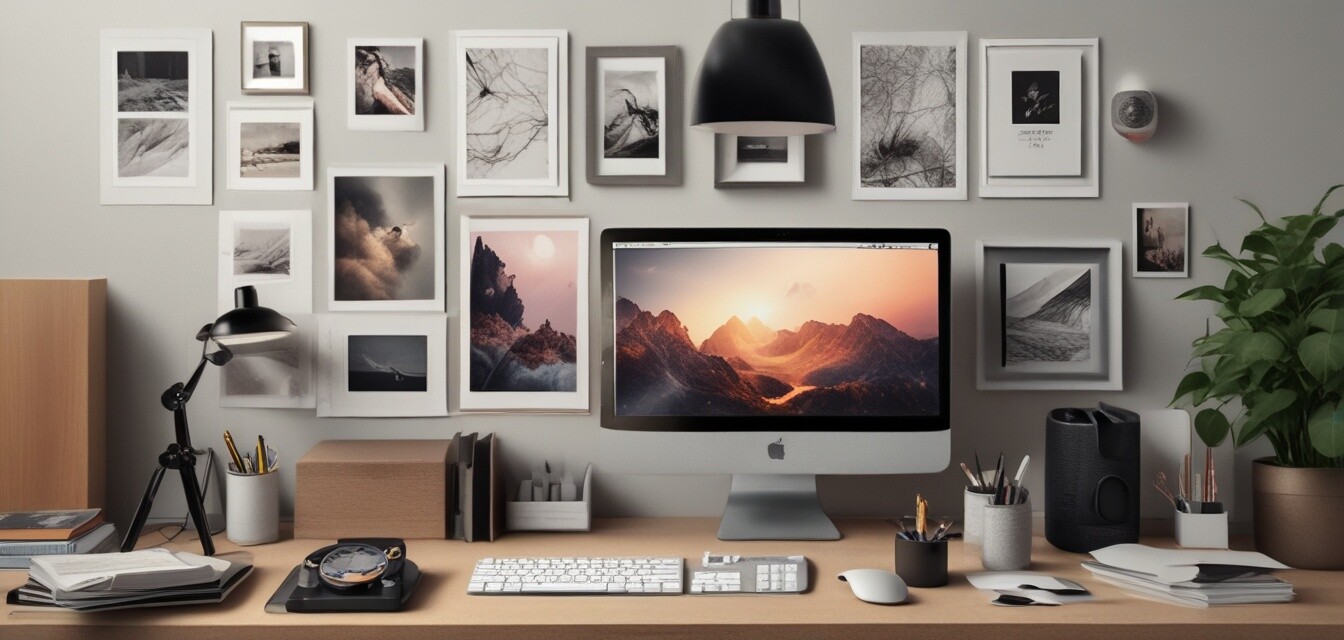
Building an Inspiring Mood Board for Your Office
Key Takeaways
- A mood board is a powerful visual tool to express your style.
- Select a theme that inspires productivity and creativity.
- Incorporate color palettes, textures, and meaningful quotes.
- Use digital tools or traditional materials to create your board.
- Regularly update your mood board to reflect your evolving tastes.
Creating a mood board can transform your workspace from mundane to motivational. A well-designed mood board reflects your personal style and keeps you inspired while working from home. Whether you prefer a digital format or enjoy the tactile feel of physical materials, the process of building a mood board allows you to curate visuals that resonate with your aspirations. In this guide, we will delve into how to create an inspiring mood board for your office, highlighting essential elements and providing tips for success.
What is a mood board?
A mood board is a visual collage that combines images, materials, colors, and text that encapsulate a specific theme or idea. It serves as a source of inspiration and can guide your design decisions for your home office. Mood boards can help you envision the overall atmosphere you wish to create—be it calm, energetic, or creative.
Steps to create your inspiring mood board
1. Define your theme and purpose
Start by deciding the theme of your mood board. Consider the vibe you want to cultivate in your office and think about how it can enhance your productivity. Here are some popular themes:
- Minimalist serenity
- Bold and colorful
- Nature-inspired
- Vintage chic
- Modern industrial
2. Gather your materials
Depending on your chosen format—digital or physical—you’ll need to compile materials. For a digital board, you can use design platforms. For a physical board, look out for:
- Magazines
- Fabric swatches
- Paint samples
- Printed images from the internet
- Quotes that inspire you
3. Select color palettes
The choice of colors can greatly influence the mood of your office. Choose a palette that resonates with your theme. A good way to narrow down your selection is to use color scheme tools or websites dedicated to color palettes.
| Color Palette | Theme | Best For |
|---|---|---|
| Soft pastels | Calmness | Mindfulness, relaxation |
| Bold primary colors | Energy | Creativity, innovation |
| Earth tones | Nature | Comfort, warmth |
4. Curate inspiring visuals
Find and compile images that align with your theme and color palette. Seek out artwork, photographs, or illustrations that resonate with your desired office aesthetics. Websites like Unsplash or Pinterest offer a wealth of inspiration.
5. Compost and arrange the layout
Now it’s time to lay out your visuals. Experiment with different arrangements until you achieve a composition that feels right. Utilize layering and grouping to create depth.
6. Display your mood board
Whether it's in a prominent place on your wall or digitally on your computer, ensure that your mood board is visible when working. This constant reminder will keep you inspired. You might also consider using it in conjunction with ergonomic accessories to enhance your overall setup. For more on ergonomic solutions, check out our section on Ergonomic Accessories.
Maintaining and updating your mood board
Your mood board should evolve as your style changes. Regularly review and update it with new imagery, colors, or quotes that reflect your current aspirations. This practice not only keeps your workspace fresh but also ensures that it continues to inspire your day-to-day work.
Digital tools for creating mood boards
If you prefer a digital approach, several online tools can help you design your mood board, such as:
- Canva: Offers templates and easy customization.
- Pinterest: Great for collecting and organizing images.
- Adobe Spark: Allows for more extensive design options.
Conclusion
Creating a mood board for your office is not only enjoyable, but it can also significantly impact your motivation and productivity. By expressing your personal style and inspiring your work atmosphere, you can cultivate a home office that reflects who you are and what drives you. Start today, and see how a few carefully chosen visuals can transform your workspace!
Pros
- Encourages creativity and inspiration.
- Provides a clear vision for your workspace.
- Can be easily updated with evolving styles.
Cons
- Can be overwhelming if too many elements are included.
- Physical boards require space for display.